There have been many important military parades in Cape Town, but there cannot have been many at which a Victoria Cross has been presented.
Arrangements had been made for a military parade on the Green Point Common in which 2,000 troops were to participate in the Coronation festivities of King Edward VII. This was a subdued affair, as the King had fallen ill and festivities were cancelled.
Seventy-eight Victoria Crosses were awarded for the South African Campaign, but this appears to have been the only recipient to receive his award at a Coronation Day parade in South Africa—it was certainly the only V.C. in living memory to be awarded in Cape Town on a Coronation Day.
Read the powerful account of the recipient, Lieutenant Alexander Young, here.

The matter involves Mr. P.R. de Villiers (“Oom” Paultjie de Villiers, who was acting Treasurer-General during the Anglo-Boer War and one of the two signatories of the emergency Pietersburg Goewerments Notes), who apparently gave General C.H. Muller a rimmed and rimless gold pond and asked him to have them stamped with the Veldpond dies at Pilgrim’s Rest. (The blank ponde were ordinary Kruger ponde that had not yet been struck, i.e., blanks) After the war, Mint Master P.J. Kloppers visited De Villiers in Stellenbosch and, after studying the two coins, said that they were ordinary Veldponde.
However, De Villiers disagreed and said that the two coins were the last 2 Veldponde struck, and because the blanks were kaalponde (blanks) and not Veldponde, the dies broke (gebars = cracked) because the gold was harder than the Veldpond gold. Kloppers vehemently denied that there was anything wrong with the dies after he gave them to General Muller after the Field Mint was closed. Read the discussion here.

Victorian-era Patterns of South Africa
Were they mere fantasy coins?
According to Hern’s Handbook on South African Coins & Patterns, pattern coins (he also calls them salesman’s samples) were struck for the Cape of Good Hope, Orange Free State, Transvaal (Zuid-Afrikaansche Republiek) and Griqua Town during late Victorian times.
In this paper, we will look at the issue of whether they were truly patterns or mere fantasy coins struck for the collectors' market during the late 1800s. Click here to read and decide for yourself.


When the writer considers the extraordinary variety of the gold pieces which were current at the Cape from the time of the advent of Van Riebeeck until the British sovereign was installed, he is irresistibly reminded of the diversity of Old Flint’s collection described in Robert Louis Stevenson’s great buccaneering romance, “Treasure Island.” Readers may turn to the last chapter to refresh their memories. There is it written: “I (the boy hero of the story) was kept busy all day in the cave, packing the minted money into bread-bags."
“It was a strange collection . . . English, French, Spanish, Portuguese, Georges and Louises, doubloon and double guineas, moidores and sequins, the pictures of all the kings of Europe for the last hundred years, strange Oriental pieces, stamped with what looked like wisps of string or bits of spider’s web ... nearly every variety of money in the world must, I think, have found a place in that collection; and for number I am sure they were like autumn leaves, so that my back ached with stooping and my fingers with sorting them out.” Well, practically all the varieties of gold pieces in that famous hoard of fiction were once current at the Cape. Read the article here.
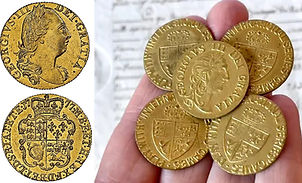
The history of banknotes in South West Africa (Namibia) is connected to the region’s colonial and administrative past under Germany and later South Africa. Portuguese ships anchored at present-day Walvis Bay as early as the 1400s, but Portugal never made a formal claim. Colonisation only began when Great Britain annexed the area around Walvis Bay.
In 1884, South West Africa became a German colony known as Deutsch-Südwestafrika. After the Treaty of Versailles in 1919, South Africa was given administrative control. This article looks at the different banknotes issued during both the German and South African periods.

At the beginning of 1916, the authorities administering German East Africa found themselves hampered by a shortage of coins caused by the British blockade and aggravated by hoarding. To meet the situation, it was decided to mint large quantities of brass and copper 5 and 20 Heller coins as well as smaller numbers of gold 15 rupee pieces.
An improvised mint was set up in the railway workshops at Tabora, and Dr. Schumacher, the manager of the Kironda Gold Mines at nearby Sekenke, was entrusted with the task of striking the gold coins. His staff included 7 Sinhalese goldsmiths recruited from Dar es Salaam. Read the article here

Note: This article was originally published in the South African Numismatic Journal number 7 dated November 1972. The author gave his source as an article that was written by D. D. Yonge in Seaby’s Coin and Medal Bulletin of February 1965. The pictures were added by the WCNS.
The Gold Burgers’ Cross of 1874
South Africa’s First Presidential Award - Part 2
In February 2024, a paper on the gold Burgers’ Cross of 1874 was published by the Western Cape Numismatic Society. After receiving welcoming news regarding the cross, the author decided to write a short follow-up to his original paper.
Not only do we now know the whereabouts of one of the crosses, but we also publish clear photographs.
The new article, Part 2, also includes a further discovery, the Transvaal Cross of Honour, which the author believes is the first South African Military Award promulgated by the ZAR government in 1876. This award seems to have been overlooked by military medal historians and authors, and will rewrite medal reference books.
For another well-researched article, follow the link here.

Napoleon Bonaparte lived lavishly during his exile on St Helena until the British government imposed strict restrictions on his household expenses. To maintain the lifestyle to which he was accustomed, alternative sources of funding had to be found, and he was persuaded to sell £25,000 worth of his personal effects.
A merchant in the town was approached to dispose of the old blue-and-white tableware and other silverware. However, all the large silver pieces had to be destroyed and sold only as silver scrap metal to prevent them from being distributed as souvenirs.
A number of the smaller, undamaged pieces were later brought to Beaufort West in 1836. These, along with several valuable medals and coins, were bequeathed to the municipality in 1921.
The author's superb research uncovers important facts about this collection. Read here...

Communion tokens were issued to members of the Reformed churches in the olden days to grant them entrance to church communions. The tokens also had other uses. For example, they were withheld from a parishioner under censure for some misdemeanour as a disciplinary tool until the church was convinced that the person had mended his/her ways.
Secondly, as in the case of the persecuted Protestants in France during the 17th century, they were used like a secret password (or passport) to exclude infiltrators who may have wished to spy on the congregation.
In this article, we discuss five tokens housed in the Huguenot Museum in Franschhoek, Cape Town.

In 1982, "The History of Professional Numismatics in South Africa" was published for the inaugural SAAND (South African Association of Numismatic Dealers) Trade Fair, held in Johannesburg from 15–17 April of that year. The article, written by Stan Kaplan, offers insight into the early coin dealers and "collector-dealers" in South Africa, dating back to as early as 1960.
It is reprinted here in full, with added notes and photographs by the author of this article, highlighting the important role that coin dealers play in furthering numismatics. Read more...
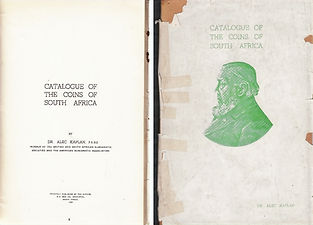
In June 1961, the Afrikaans newspaper "Die Transvaler" published two articles about this medal after being contacted by the Africana Museum.
The museum had received inquiries from a member of the public but was unable to provide any information. That person turned out to be Dr. Isidor Kaplan, a well-known Johannesburg Africana collector and numismatist. Dr. Kaplan noted that he could find no one who could tell him when or why the medal was struck.
This well-illustrated piece presents new information about the history of this unusual medal. Follow the link to read the article...

In December 2023, a two-part paper was published on this website regarding the ZAR coinage of 1892. Part 1 looked at some anomalies regarding the number of coins minted, when the Berlin-struck coins were issued to the public, the striking of the first coins in Pretoria, and the scarcity of the issues. Part 2 discussed the rare proof issues and the Glück auf Transvaal medal.
Recently, WCNS initiated access to files kept in the National Archives in Pretoria related to the years that the ZAR Mint was in operation. Extremely important documents were discovered, many of which were probably never accessed by numismatists before and some certainly never published before. In this paper, this information will be revealed

Although formed in 1910, the first coinage for the Union was only struck thirteen years later, in 1923, at the Pretoria Mint, a subsidiary of the Royal Mint. As can be expected of a coin series minted over such a long period, mintage figures fluctuated for certain denominations in certain years due to sufficient (or insufficient) mintages in previous years.
The paper looks at the silver issues of the 3d (tickey) to the crown (5 shillings) and gives compelling reasons why mintage figures don't always influence the scarcity of Union coins. It includes a summary in table format, which serves as a handy guide for easy future reference. Read it here...

In this article, we look at the women who appear on South African minted coins over the past 151 years since 1874. Even though the first woman ever to be depicted on a coin anywhere in the world was born and raised on the African continent, there were long periods in history when this practice was halted.
South Africa is no exception, with women only beginning to appear on local coins in the 1900s. This has since improved and is an interesting series for theme collectors. Read the well-illustrated article here...


In this paper, we will take a closer look at banks and businesses that issued their own banknotes during Victorian times in the Boland, Swartland and Overberg regions of the Western Cape. Very few books have been written exclusively about our early banknotes, with publications like Walter Bergman’s “A History of Regular and Emergency Paper Money Issues of South Africa” (1968) and Brian Hern’s “South African Banknotes & Papermoney Pre-Reserve Bank” (2010) being exceptions to the rule.
These two numismatists have identified ten banks and one other business that issued their own banknotes.. Follow the link to read more....

The South African Numismatic Society, the forerunner to the Western Cape Numismatic Society, was established in 1941. Initially named the Cape Town Coin Club, it was soon renamed the South African Numismatic Society.
This short article outlines the history of the South African Numismatic Society (SANS) and the Western Cape Numismatic Society (WCNS) from their founding to the present day. Read the article here...

The Doit of the VOC (Dutch East India Company)
VOC doits are not that scarce and expensive (with exceptions) and offer a wide and interesting collecting field for South African hobbyists. They are also collected internationally, and in great demand even in America, where the VOC issues are called New York Pennies.
As we will see, VOC doits were struck between 1726 and 1794 for use by the company, but after it went bankrupt in 1799, they were still struck depicting the VOC monogram until the early 1840s (of which some retained the frozen date 1790). Read further

This article was originally published in the South African Numismatic Journal (Number 8) in March 1974. Victor des Vages was a member of the first committee of the old South African Numismatic Society that had its inaugural meeting on the 29th of August 1941 in Rosebank, Cape Town. Victor recalls the early days when the society, the forerunner of the WCNS, started as the Cape Town Coin Club and its growth from there.
A part of his coin collection was housed in the South African Cultural History Museum in Cape Town, and he was also granted an honorary life membership of SANS. The Western Cape Numismatic Society has added the pictures to this article.

The 1899 Paul Kruger Gold Pond
The coinage of the Zuid-Afrikaansche Republiek has been much in the news lately due to the sale of the so-called 'single 9' overstamped pond of 1898 in January this year. After the Anglo-Boer War broke out on 11 October 1899, the Pretoria Mint decided to continue the issuing of gold coins, but no 1899 dies were available and subsequently, a number of 1898 ponde were overstamped with the figure “99” on the obverse. Statistics show that the overstamped 1899 pond is the rarest ZAR issue (proof coins and patterns excluded) with only 25 coins graded.
The article explores another magnificent South African coin that is sought after by serious collectors. Read here...

The King of South African Coins
In a recently published list of the world’s most expensive coins, the top twenty coins are, except for three, all North American coins. The three exceptions include the so-called “Single 9” overstamped ZAR Paul Kruger Pond of 1898, also dubbed "The King of South African Coins."
The article gives an in-depth look at this rare and valuable coin's pedigree, detailing the initial scepticism, followed by the inevitable euphoria. Also included are the prices realised for the coin over the years. The "Single 9" is sought-after by many collectors for its historical and investment value. Read here...

The Numismatic Springbok
The Springbok depicted on South African Coins & Notes
The Springbok antelope, one of the national animals of South Africa, has been part of South African numismatic history since the early 1900’s. A 10-shilling note, issued as far back as 1916 by the National Bank of South Africa Ltd, a forerunner of today’s First National Bank (FNB), depicted a Sprinbok on the reverse side of the banknote. Since then it has appeared on numerous other South African banknotes and coins. This article is a wonderful journey showing off the different designs of the iconic Springbok used by artists over the years, a symbol of pride, resilience and unity. Read more...

Transport tokens come in many forms, being it for railways, trams, buses, ferries and even cable cars. This paper discusses tram and bus tokens that were used at the Cape in the olden days. The following modes of public transport (excluding trains and cars) were available to Capetonians:
-
Animal-drawn (mostly horses) carts and wagons.
-
Trams drawn by horses (both on tracks & trackless)
-
Electrical trams (both on tracks & trackless)
-
Buses (also called omnibuses).
No fewer than 17 tram and bus companies are identified, some in opposition to each other and others under the same corporate umbrella. A complicated subject to research has now been made easily accessible with illustrations and needs to be saved as a standard reference tool. Read here...

Further Notes
The Rarest of the Rare: Unique and Very Rare Gold Coins of the Zuid-Afrikaansche Republiek
In 2022, The Rarest of the Rare: Unique and Very Rare Gold Coins of the Zuid-Afrikaansche Republiek by P.H. Nortje was published. At the time the author stated: “After consulting with many leading South African numismatists and various sources, some of the coins are still a mystery. The project was not easy with many gaps still to be filled."
Exciting new information on three of the ten coins previously discussed has now come to light, prompting the author to write this follow-up. Additional information is also published on two coins that were not included in the original publication, "filling the gaps" to quote the author. Read here

In 1969, Dr Frank Mitchell, a South African Numismatic expert, examined a 1900 gold ZAR pond, better known today as the Van Niekerk forgery, and immediately identified three areas which he believed proved the coin to be fake, namely, die state, weight and colour.
This three-part series, of which this is the final, followed leads, spoke to experts, examined court records and discovered never-before-published records from both national and international archives. The research done for this series, in addition to making a compelling argument about the "Perfect Forgery", comes together in Part 3 and inadvertently helps to rectify popular beliefs and past publications. Read here...


South African gold coins truly offer a wide range for both collectors and investors. Unfortunately, they are as expensive as one would expect. However, over the years, few people have regretted investing in gold, especially in a country like South Africa, where the Rand is constantly under pressure from more stable world currencies like the Dollar and Pound.
This article must not be seen as investment advice, but rather an informative catalogue of collectable South African gold coins. Read more

There are still many gaps in the numismatic story of South Africa. “What coins”, one is asked “have been used at the Cape since the first European settlement in 1652?” or “What coins did the Voortrekkers take with them when they set off North with their wagons in the 1830’s?” There is still no final answer to these questions, no full and final or comprehensive list of coins to be found in the marketplace of 17th, 18th or 19th century Cape Town, in the days when our embryo city was “The Tavern of the Seas”. In 1967, Die Nuwe Kerk, a church building of the Dutch Reformed Church (Die Nederduitse Gereformeerde Kerk in Suid-Afrika), situated in Nuwe Kerk Street, Cape Town, was demolished, the foundation stone was raised and a collection of 20 coins was found. Dr Frank Mitchell examined the collection closely... Read more

The Story of the Fake Kruger Pond of 1900 - Part 2: The Sasseen Version
In Part 2, two of South Africa's foremost numismatists, Prof. Francois Malan and Glen Schoeman, share their accounts of discussions with master die cutter Tommy Sasseen (pictured here) regarding his views on the 1900 Kruger sovereign forgeries. Glen Schoeman, who worked closely on numerous projects with Tommy over a period of 35 years, wrote a complimentary piece for the WCNS upon request and says: "Tommy examined the coins under a microscope for days". Prof Francois Malan's meticulous approach together with Glen Schoeman's first-hand account and sharing of his knowledge that shines through has never been documented. Glen's full piece was added as an addendum to Part 2 and will be available in the WCNS archive. Read more...

The Story of the Fake Kruger Pond of 1900 - Part 1: The Levine Version
Many articles have been published on features that are fairly common to coins that have been copied or imitated. However, the sudden appearance in 1968 of quantities of mint condition ZAR ponds dated 1900 even had the experts sharply divided over this particular piece. The near-perfect coins appeared to have been struck with original dies and sold for "bargain" prices. In other words, too good to be true. Years later, the original seller, Gerritt van Niekerk, confessed, but many questions remained. In a two-part article, Pierre H. Nortje revisits this intriguing episode in SA numismatics with interviews and further research that bring to light new information. Read Part 1 here...
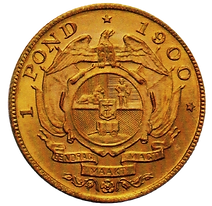
In this paper, decorated author, lecturer, and expert in Decorations and Medals, Brig Gen Deon Fourie discusses the controversial article published in the British newspaper, Daily Mail in 2021 under the heading "The hero snubbed for being black: Petition is launched to award Victoria Cross to South African WWII hero who snuck(sic) aboard Nazi ship and blew it up with bomb he built from a tin of condensed milk - but was denied medal due to his race".
The author explains the processes for nominating and awarding such esteemed honours, and he applies them clearly and methodically to the Maseko case using publicly available facts to reach his conclusion. It is a must-read for both medal collectors and anyone interested in the process of awarding them. Read more here.

Numismatics, the study and collecting of coins, is a much older pursuit than our sister hobby, philately (stamp collecting), and the reason is simple – coins existed for much longer before the first postal stamp was issued in Great Britain in 1840. The first coin to feature on a South African stamp was fittingly the first coin struck for South Africa the Burgerspond of 1874. On 6 April 1974, the Post Office issued the 9c to coincide with the 5th Numismatic Convention held at Carlton Hotel in Johannesburg and attended by the Prime Minister, Mr B.J. Vorster. The stamp on an official first-day cover is shown on the right. The article explores the historical connection between philately and numismatics. Read the article...

Although man’s interest in dinosaurs and palaeontology goes back to pre-Victorian times, the first coin featuring a dinosaur was only released in 1989. The 1993 blockbuster movie Jurassic Park sparked new interest amongst the general public and a wealth of coins featuring dinosaur motifs were produced in that same year. We take a look at some of these, including the 1998 SA Mint-released Natura series set aptly named "Rise of the Dinosaurs". An interesting series of coins for theme collectors. Link here...

The association between sports and numismatics dates back more than two thousand years to the ancient Greek and Roman world when some sporting events were depicted on coins. A study revealed that around 75% of South Africans are interested in sports, with approximately 25 million actively participating.
This article takes a look at South African coins depicting sporting events and makes a case for more sporting themes to be depicted on South African circulation coins. Read more...

In researching a different subject, the author came upon a token attributed to Cape Town by past South African Numismatists. However, further reading proved that this is not the case. Not only is the token not a Cape Town issue, it is not even South African, but hails from Smethwick in Staffordshire, England.
This prompts the author to ask the following question: - Are there other Cape Town tokens that were also wrongly attributed to being local issues in the past?
Our study focussed on Victorian & Edwardian Era Tokens (mid-1800s to 1910) - Link here

A giant artwork made of sand modelled on a coin with a very interesting history created a unique occurrence in the world of numismatics: a type or series of coins that were minted hundreds of years ago and was, in due time, discontinued and replaced, was recently officially returned to general circulation at a different value to what they were initially worth. These were the same coins that were cast so many years ago, not restrikes or replicas. A fascinating look at this historical coin series that also gives us insight into the world of Japanese culture. Link here
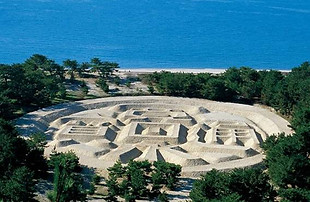
Coin hoards in South Africa are an infrequent occurrence; over the years, not many have been recorded. What is disturbing is that in those few instances where coins have been unearthed and buried together, very little is known about the hoard with the details vague. The coins themselves are seldom described. The article, which excludes shipwreck finds, discusses treasures found on South African dry land and includes the Kruger Millions, treasure found inside a crocodile and more. Link here

Coins are generally counterfeited for two reasons. Firstly, forgeries of higher-value coins in circulation were designed for general circulation at face value. This has been made by criminals since the dawn of coin production 2000 years ago. Secondly, copies of coins for the numismatic and tourist market. The first is usually of rare and highly valued coins. South African gold coin forgeries are well documented, but less is known about the various silver denominations, including the famous 1931 tickey (3d) of which numerous forgeries exist. This is a well-presented article that includes numerous pictures to help you avoid the counterfeit pitfalls when collecting these coins. Link here...

Some of the South African Numismatic “firsts” have already been discussed individually in previous articles on our WCNS website. This article now combines them in one paper, adds more information and explores the first circulating coins at the Cape of Good Hope, the first Honorary Medal, awarded by the VOC to Ysbrant Godske in 1677 for the Construction of the Castle at the Cape of Good Hope and establishes the de Mist Cartwheel Penny as the first Token coinage struck for South Africa amongst other numerous "firsts" leading to our modern issues. A literary historical treasure trove. Link here...



It is fairly widely known that the gold used to strike South Africa’s first gold coin, the so-called Burgerspond (1874) was sourced from alluvial gold mined at Pilgrim’s Rest in the Eastern Transvaal. A topic that's seldom discussed in numismatic literature is the source for the silver coinage of the ZAR that was struck from 1892 to 1897. A silver bar contains the inscription First Pure Silver produced on African Continent, Pretoria, dated 28 February 1893 and presumably from the Albert Silver Mine. This claim seems unlikely to us. Follow the link for more...



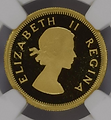

During the 1970s and 1980s it was very popular worldwide for private companies to strike collectable thematic medallion sets, usually in silver, and present them in beautifully crafted wooden cabinets or display albums.South Africa was no exception.
The article discusses some of these sets. Readers are encouraged to visit Professor Michael Laidlaw’s South African Commemorative Medals website from which much of the information in this article was sourced from. The pictures on his website are truly exceptional. In 2016, Prof. Laidlaw received the National Numismatic Society’s bronze medal for the work he has done on his website.
In Search of a Cape of Good Hope Medal
On his website South African Commemorative Medals, Professor Michael Laidlaw catalogues a silver medal with the legend reading "HUMANE SOCIETY, CAPE OF GOOD HOPE" with the date “1842”. It was made by W. Warrington, 27 Strand, London. He says “Nothing is known about this early Cape lifesaving society”. This prompted us to do some research on the medal.
Shipwreck Gold Coins from South Africa
Gold coins recovered from shipwrecks in South African waters were, in most cases, personal possessions carried by rich passengers and officers on the ships. However, a ship like the Birkenhead (1852) was rumoured to have had a military payroll of £240,000 in gold coins, weighing about three tons on board. The article explores some interesting coin finds along the South African coastline.
The Tickey – a legendary South African Coin
The word “tickey” was a slang name given to the lowest denomination coin issued in silver for use in South Africa in pre-decimal times during the 1800s and 1900s. The article takes a closer look at the legendary coin and the origin of the word.
Boer War P.O.W. Money of the Cape Town Prisoner of War Camps
During the Anglo-Boer War (1899-1902), two prisoner-of-war camps were established in Cape Town, the first at Simon's Town and the second at Green Point. Their financial affairs were put under the control of the Camp Commandant, who issued Good For notes for use in the POW camps. A captivating article and a must-read.
South African Advertising Token Sets of the 1960s & 1970s
This short article explores some of the South African advertising tokens issued as collectable sets. These tokens were designed to entice children, encouraging them to influence their parents to shop at or support the companies that issued them. Most were produced by oil companies and distributed at their garages during the 1960s and 1970s.
Very little has been written on these tokens in the past and information about them is truly scarce. This article uncovers more information on these items and publishes the first clear colour picture of the Lina de Lorme token. A controversial and fascinating subject.
The Table Mountain Aerial Cableway which opened in 1929, is one of Cape Town's most popular tourist attractions with approximately one million people a year using the Cableway. Four tokens and medallions were issued with little information available. We take a look.
The ZAR-coinage mintage figures, supplied by generations of South African coin catalogues, are based on those published by J.T. Becklake, the last Deputy Master of the Royal Mint and the first Director of the South African Mint in Pretoria. However, some anomalies seem to exist in the reporting of these figures. The article explores new information regarding these figures.
Part 2: The rare proof issues and the Glück auf Transvaal medal
The second part of the discussion around the 1892 ZAR coinage centres around the Gluck auf Transvaal medal and explores whether there is a connection between these medals and the proof issues of 1892. The author gives new comparisons regarding mintage figures and casts further light on the proof coin issues. The article also touches on the origin of the ZAR mint presses with some compelling facts.
For collectors of the coins of the South African King George V series, the year 1931 will always be an extremely difficult year to complete. To complete a set in non-proof condition would prove much more difficult and although it is theoretically possible, it is doubtful that any collector has ever succeeded in this goal, especially in certified (graded) condition. The jewels in the crown of King George V so to speak.
The Sammy Marks Tickey (3 pence) is a legendary South African gold coin that commands very high prices when specimens are sometimes offered for sale. Since numismatists became aware of the coin many years ago, it was always shrouded by myths and legends – as one would expect from a world-famous coin. In this article, we find out more about the influential Sammy Marks.
After war broke out between England and France in 1781, the Cape virtually ran out of hard currency as an ally of the Netherlands supporting the French. This shortage led to the issuing of paper notes the following year to prevent a currency shortage crisis. The article discusses the origin of the Stiver and Rixdollar denominations and compares the design of the local notes to those issued in other parts of the Dutch territories.
This two-part article digs deep to try and find the answer.
This short paper takes a look at coinage that was issued before 1874 for exclusive usage in South Africa. These issues therefore predate our first coin that carries the name of South Africa, which is the Burgerspond.



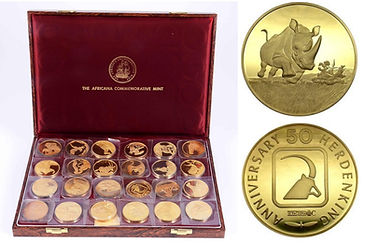





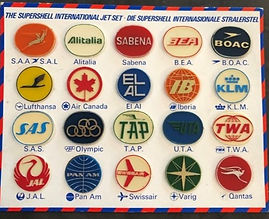
_edited_edited_edited.png)
.jpg)










